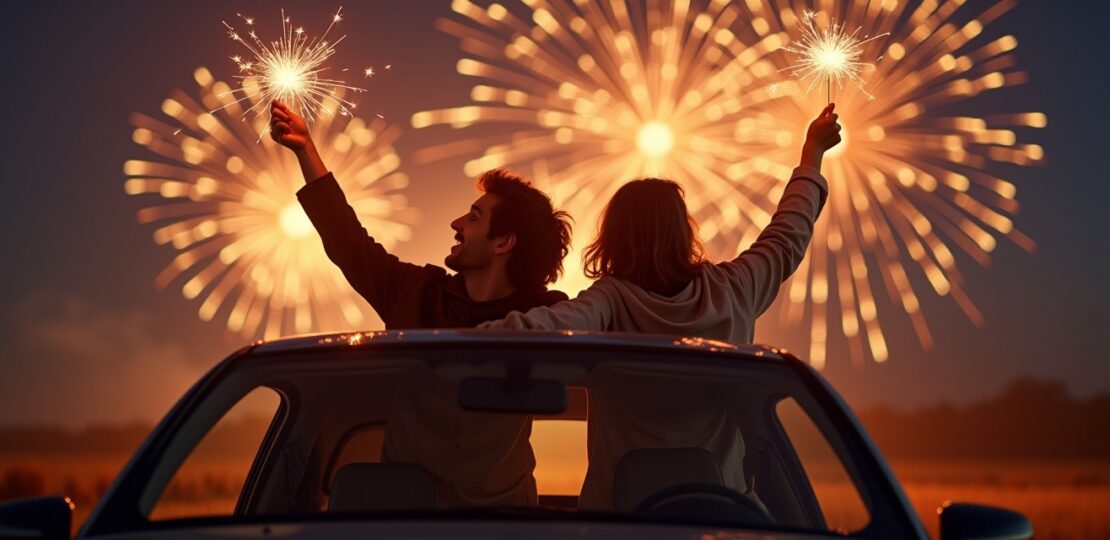Couple photo prompts for festival nights: poses, light, and captions that read like shayari
September 15, 2025 | by admin

Festival nights blur by – diyas, fairy lights, music, hugs, phones everywhere. To get a couple shots that feel warm and timeless instead of frantic, have a tiny plan you can run on autopilot. Split it into three steps: a quick phone setup, a few poses that flatter outfits and mehndi, and captions with a shayari feel minus the clichés. No studio gear – just a calm routine and a handful of prompts you can recall on the spot.
Camera-ready rituals before you step out
Start with the phone you already have. Switch your camera to 1× for full-body frames and 2× for tighter portraits; avoid pinching beyond those steps, because digital zoom softens edges on embroidery and henna. Turn on gridlines and set the aspect to 4:5 or 3:4 so vertical shots sit well on feeds. In bright scenes, keep ISO low and exposure slightly under; that protects skin tone and the glow of diyas from blowing out. Lock focus on faces, then slide exposure down a notch until the highlights calm.
Silence the noise that derails attention during couples’ shots. Use Focus or Do Not Disturb and allow only rides, family, and camera apps. While you’re pruning alerts, clear promo categories that don’t matter tonight; if you run into references like the desiplay app, file them under “check later” and keep the screen quiet for the moments that count. You’ll hold steadier poses, and you won’t miss the one frame where eyes meet and smiles soften.
Give yourself a simple shot list: one close portrait with foreheads touching, one mid-shot that shows henna and sleeves, one playful movement (a twirl, a step, a laugh). Three beats prevent the endless scroll of near-duplicates and give your album a beginning, middle, and end.
Poses that write the story for you
Think of each pose as a line of verse; together they form a ghazal. Start with symmetry for calm, then add diagonals for energy.
- Foreheads together, eyes closed. Stand half a step apart so noses don’t press; tilt chins slightly down to lengthen eyelashes. Ask one of you to breathe out slowly through the nose; the micro-relaxation softens the mouth and removes the camera-smile.
- The bracelet frame. Lift one hand to adjust an earring or tuck a strand; the other partner faces you at three-quarters, watching with a half-smile. This brings mehndi and jewellery into the frame without feeling staged. Keep fingers softly arched rather than splayed to avoid tension.
- The sari-drape or dupatta arc. Let one person lift a corner of the fabric from behind like a curtain; step into that arc together and look toward the same off-camera point. Fabric gives a ready-made leading line, and the shared gaze reads as intimacy rather than performance.
- The walking beat. Hold hands at waist height, take three slow steps, and on step two both look at each other, not the lens. Ask your friend to shoot in burst mode from a slight diagonal, knee level; that angle lengthens legs and shows footwear detail without crowding faces.
Small posture cues change everything: relax shoulders, soften the jaw, press tongue lightly to the roof of the mouth to avoid a tight chin, and exhale right before the shutter. If one of you tends to blink, count “three, two, breathe” and shoot on the breath.
Light recipes for diyas, street fairs, and crackers
Open shade at dusk is your friend. Stand just inside the shadow of a veranda or arch, facing the brightest patch of sky. This gives you a soft, directional wash that sculpts cheekbones and mehndi without harsh contrast. If the shadow side of the face looks heavy, use a white napkin or a plain invite card as a tiny reflector just outside the frame.
For diya light, let the flame be a supporting actor rather than the sun. Hold a diya below chin height and off to the side; place your face so the glow kisses the near cheek and leaves a gentle falloff on the far side. Underexpose a touch, and avoid mixing diya with overhead downlights, which carve unflattering shadows under the eyes. If you can’t switch off the ceiling lights, step back until their effect fades and the flame regains shape.
Street-fair LEDs can go blue and flat. To keep warmth in skin, position yourselves near a stall with warmer bulbs or a vendor’s incandescent string. Turn your bodies three-quarters to the light so one shoulder catches the glow. If fireworks flare behind you, keep them as soft bokeh: shoot at 2× from a few metres away, tap to focus on faces, and slide exposure down. The sparks will bloom without stealing attention.
Indoors, window light beats mixed sources. Stand at a 45-degree angle to a single window, pull a sheer curtain if you have it, and move one step closer or farther until the shadow under the cheek is gentle rather than stark. Avoid standing directly under a downlight; even a small sidestep can remove eye sockets’ shadows and restore skin texture.
Captions that read like shayari
Great captions feel like a breath between lines rather than a slogan. Let images carry detail; let words carry feeling. You can build them from simple patterns that echo shayari’s rhythm without copying famous verses.
Here are five caption skeletons you can adapt on the spot:
- present-tense image + sensory detail + promise: “Hands of henna, air of clove and ghee, and a promise to walk slow tonight”
- metaphor + place + shared action: “Two lamps in one window, counting footsteps back from the music”
- small object + memory + wish: “Jasmine pin in your hair, the smell of home, and a wish that refuses to whisper”
- time marker + pause + feeling: “After the fourth diya, a pause; after the pause, the courage to hold your hand”
- colour + motion + quiet: “Marigold on our sleeves, city lights racing past, our quiet staying still”
Trim punctuation. One em dash or comma is plenty; too many dots drain confidence. If you want a bilingual touch, add a single line of Romanised Urdu or Hindi below the English, not a full translation–think of it as a soft echo, not a repetition.
A simple flow you can repeat every festival night
Give the evening a spine so you never feel rushed. Ten minutes before leaving, clear alerts, set Focus, wipe the lens, and skim your three-beat shot list. On arrival, claim one calm corner with open shade or window light and knock out the portrait, the mehndi mid-shot, and the movement frame in that order. Between social moments, look for micro-scenes–pinning a brooch, fixing a bangle, lighting a diya–because hands tell love stories as clearly as faces.
When fireworks start or the dance floor wakes up, don’t chase every burst. Take one bokeh frame with sparks behind, one wide scene to remember the crowd, and then pocket the phone. You’re after a small album that reads like a poem, not a stack of screenshots.
On the ride home, shortlist ten frames and write two caption drafts while the evening’s feelings are still warm. Post later, after sleep; rested eyes pick the truest image. The habit that matters most is calm–calm during setup, calm during poses, calm during editing. That calm lets your photos keep the glow of the night without the blur of the rush.
RELATED POSTS
View all



